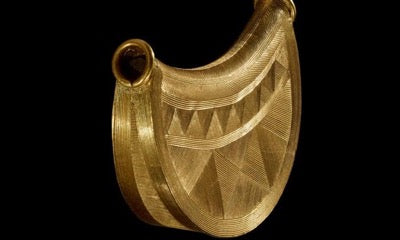The Shropshire Sun Pendant
I find news like this so exciting! Around 3,000 years ago in the Bronze Age, incredibly skilled craftsmen made this perfect little pure gold Sun Pendant. It was found in Shropshire by a Dectorist in 2018 and has now been acquired by the British Museum for £250,000.
The pendant was found in a landscape that would have been boggy and wet during the Bronze Age. Curators think it would have been intentionally cast in to the water as an offering.
The Shropshire Sun Pendant will be on display at Shrewsbury Museum and will come to the British Museum in 2021. I'm looking forward to seeing it.

The Treasure Process
The Detectorist adhered to all the correct procedures and reported the exciting discovery to the local finds liaison officer and brought it to the British Museum under the treasure process where a coroner found it to be treasure.

The Skills
This type of pendant is known as a bulla (the Latin word for bubble), because it is hollow. With great skill, two gold sheets and a base section were soldered together, leaving a curved tube for the chain or cord. After polishing and finishing the engraved pattern would be applied.
Every surface is engraved with geometric designs filled with cut parallel lines and concentric curves. They are so precise, so even, that the maker must have used a compass or divider to mark them out and then cut them using a graver with a 45 degree cutting edge. The lines create a dynamic graphic design which makes the gold reflect the light in shimmering shades. I wonder whether one person made the entire piece, or whether there were two different specialists. Such incredible work.
- Love Joy
Information and images taken from an article in the Guardian and The History Blog.
To read more, visit https://www.archaeology.co.uk/articles/the-shropshire-bulla-bronze-age-beauty-and-a-mystery-from-manchester.htm

